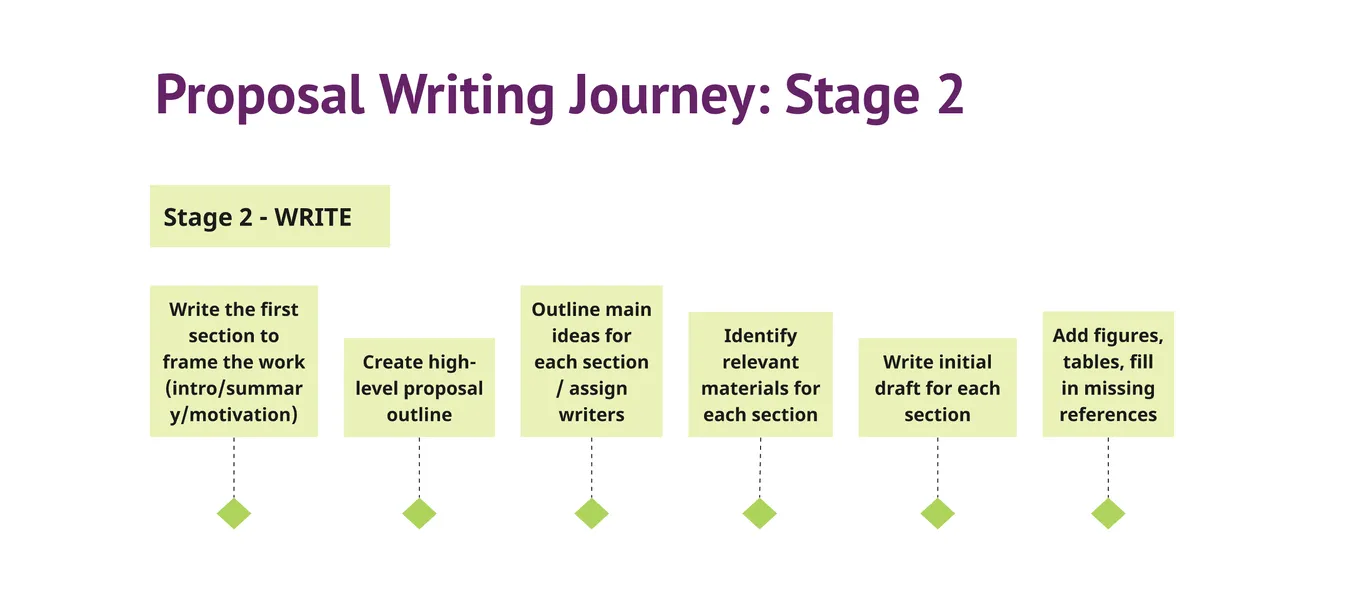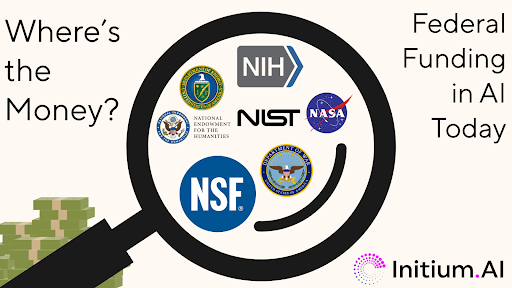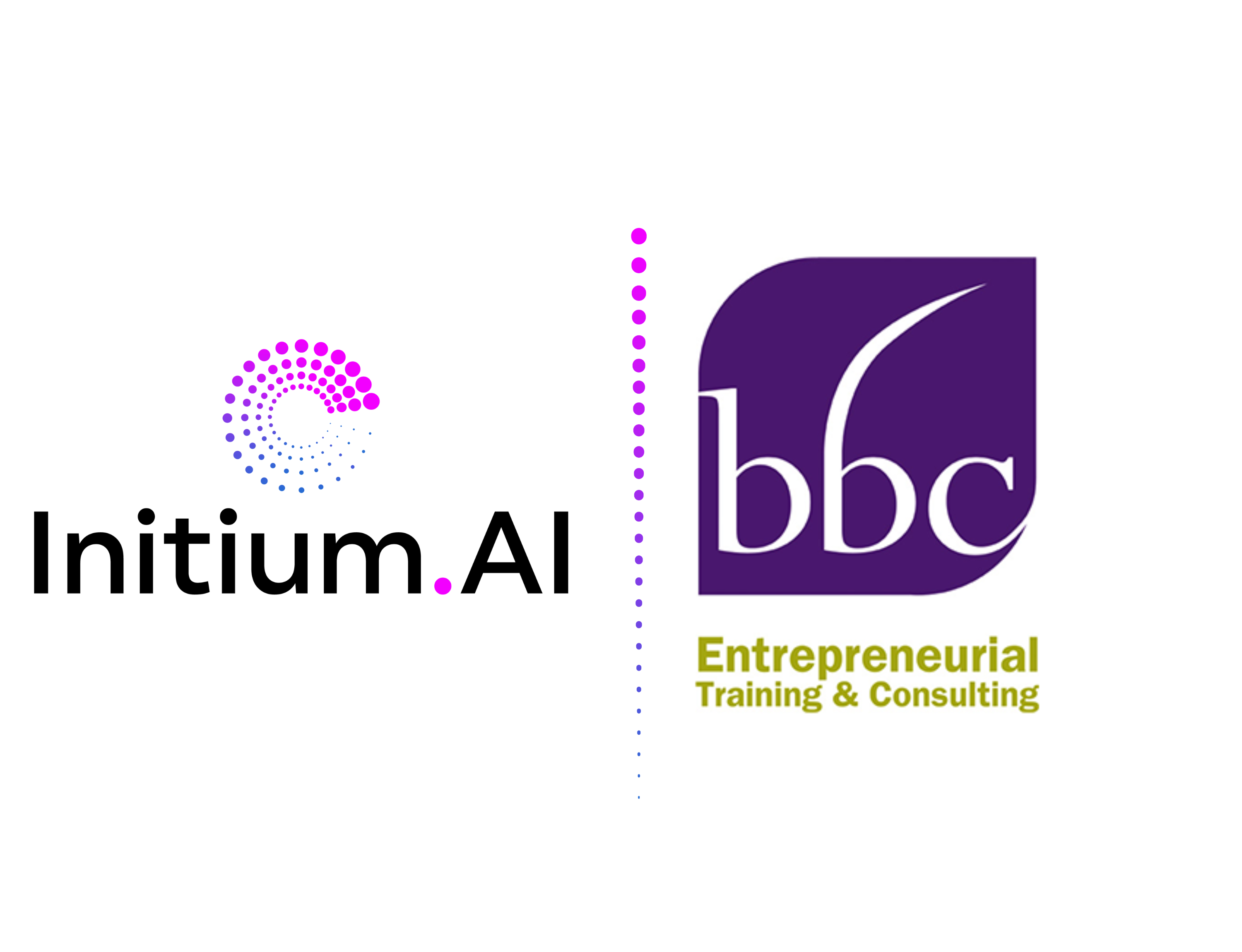
How to Write a Grant Proposal — Stage 2: Writing
Transforming an early-stage research idea into a fully funded project requires more than just innovative thinking. Researchers have to develop their ideas, align them with the funding agency’s priorities, and eventually produce a compelling proposal with which they can successfully compete in an often-challenging grant ecosystem.
We have identified three key stages in the grant process: Ideation, Writing, and Refinement. In a previous post, we looked closely at the first stage, Ideation. In the current post, we will go deeper into the second stage: Writing.
Write the First Overview Section
The first step in writing a proposal is developing the overview section, which establishes the framework for the entire document. Depending on the funding agency, this could be the “Specific Aims” section (in NIH terminology) or the “Summary” section (in NSF terminology). This section should clearly articulate the problem, research significance, and innovative approach. The narrative must demonstrate the project’s unique contribution, which often means connecting theoretical insights to practical implications. It should convey complex ideas in clear, concise language that captures reviewers’ attention and establishes the proposal’s credibility. This section can also serve as a one-pager to share with program managers at funding institutions, allowing you to gather their input on whether your project aligns with the programs they oversee. Additionally, it can serve as a concise overview to share with colleagues and collaborators, providing an opportunity to receive valuable feedback and constructive criticism.
Create the Proposal Outline
The next step is developing a proposal outline, which often begins with identifying the required sections specified in the funding call. For example, NSF proposals often mandate a Broader Impacts section, while NIH requires a Significance section. Review the call for proposal guidelines carefully to ensure all necessary components are included. Beyond these requirements, determine any additional sections that could enhance your proposal’s clarity and impact—this may involve discussions with collaborators to align on what should be included. Once the sections are identified, map them directly to your research objectives. This step ensures that every part of the proposal contributes to the overarching narrative and demonstrates how your research addresses the funding agency’s goals. An effective outline serves as both a structural guide for drafting and a roadmap for reviewers to follow the logical progression of your ideas.
Outline Main Ideas and Assign Writers
Once you have an outline, break the proposal writing into manageable components. For each section, identify three to five main ideas you want to address. These are simple bullet points that highlight the core arguments you want to make in that section. If you have collaborators on the project, it’s helpful to iteratively discuss these ideas with your team members. Next, if applicable, assign sections to team members to write initial drafts, based on their expertise. Close communication with your team will help you align on objectives, establish clear guidelines, and create accountability mechanisms. This will ensure that the final document speaks with a unified voice while leveraging individual strengths.
Identify Relevant Materials
For each section in the proposal (or possibly for the sections you are responsible for the first draft), it often helps to identify the materials that can support you in the writing. For instance, you may want to compile relevant papers; or get a description of a pilot study you conducted that will support your arguments; or other related documents. Having these materials readily available will help you synthesize perspectives to support your research framework, as well as strategically select evidence to substantiate the proposal’s key arguments.
Write Initial Draft
Now that you have an outline, the main ideas for each section, and relevant supporting materials, the next big step is translating this conceptual framework into a written document. While you should strive to produce a high-quality first draft, remember that your proposal is a working document that will be refined through iterative feedback – so don’t let perfectionism hinder you from writing this initial version of your sections.
Identify Figures, Tables, and Missing References
Finally, complete your draft with visual and quantitative elements, and identify any missing references that can clarify and strengthen arguments. Figures and tables should support the narrative and be self-explanatory, complementing and supporting the proposal. They can also help to break up the “wall of text” (entire pages of text-only), which can often discourage reviewers from fully focusing on the content of the proposal.
If you made it to this point, congratulations! You just finished the hardest part of the proposal writing. The next major stage will be to gather feedback and iteratively improve your draft – we will cover that in a future post.
At Initium, we are committed to providing support through every step of the grant application process. This includes several mechanisms to support you in the Writing stage described in this post, such as developing proposal outlines, identifying relevant materials, brainstorming tools, and more. If you’re interested in exploring how AI can assist you in proposal writing, feel free to try it out!



